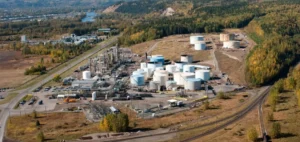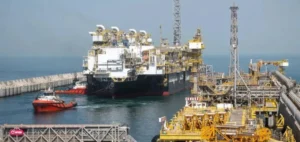PetroChina has announced the integration of 10.97 Gm³ of underground gas storage capacity via the acquisition of three major sites located in Liaohe, Xinjiang and Xiangguosi. These facilities are consolidated into two new joint ventures created with PipeChina, for a total transaction value of CNY40.02bn ($5.43bn).
Financial structuring and state-led partnerships
The two companies, Liaohe Gas Storage and Xinjiang Gas Storage, have a combined registered capital of CNY25.6bn, equivalent to 64% of the transaction value. This setup allows for a balanced structure between equity and debt. The implicit valuation of around CNY3.65bn per Gm³ reflects the strategic nature of these depleted-field storage assets.
PipeChina, the national operator of gas infrastructure, co-owns the entities with an investment vehicle affiliated to PetroChina. This structure ensures state functional control while assigning economic responsibility to a listed company, aligning national energy security priorities with long-term public investment logic.
Geographical distribution and strategic purpose
The three sites are located in key regions of the Chinese gas grid. Liaohe in the northeast serves industrial zones and urban heating demands. Xinjiang in the northwest is positioned along key import corridors from Russia and Central Asia. Xiangguosi in the southwest supports inland market supply.
This configuration enables better absorption of seasonal consumption fluctuations and logistical optimisation of inbound gas, particularly amid increasing supply diversification and shifting global flows driven by geopolitical constraints.
Regulatory framework and public investment rationale
The joint venture structure with PipeChina allows PetroChina to consolidate the assets on its balance sheet while complying with regulatory unbundling mandates set by Chinese authorities. The integrated capacities remain focused on the domestic market, reducing exposure to sanctions regimes while ensuring revenue stability.
The facilities operate under a regulated tariff scheme defined by the National Energy Administration (NEA) and the National Development and Reform Commission (NDRC), enhancing their stable cash-flow profile. This approach aligns with China’s current strategy to prioritise public investment in critical infrastructure.
Impact on the Chinese gas system
The additional volumes represent 2.5% of China’s annual gas consumption, estimated at 431 Gm³ in 2024. By 2030, the country targets storage capacity equivalent to 16% of annual demand. The operation makes a meaningful contribution to this trajectory, in line with NEA policy documents.
Operationally, the added capacity improves the flexibility of key pipelines such as the West-East Pipelines, facilitating interregional arbitrage and reducing seasonal congestion. This optimisation delays the need for new large-scale pipeline projects, favouring efficient use of existing infrastructure.
Implications for industry stakeholders
For PetroChina, the transaction increases the share of regulated revenues within its gas portfolio, reducing exposure to volatile income from oil and refined products. Storage becomes a financial stabilisation lever in a transforming energy landscape.
PipeChina capitalises on its role as operator without burdening its balance sheet. By focusing on service revenue from engineering, operations, and maintenance provided to the new entities, it reinforces its position as China’s national midstream platform while maintaining financial agility.
Strategic drivers and external environment
The acquisition comes amid growing scrutiny of entities involved in Russian hydrocarbon trade. With sanctions affecting subsidiaries like Chinaoil, PetroChina is prioritising purely domestic assets to safeguard internal energy flows from external restrictions.
This also supports the absorption of increased Russian and Central Asian volumes while reducing dependence on the volatile LNG spot market. Control over storage capacity gives the company strategic leverage to manage import flows and mitigate international disruption.






















